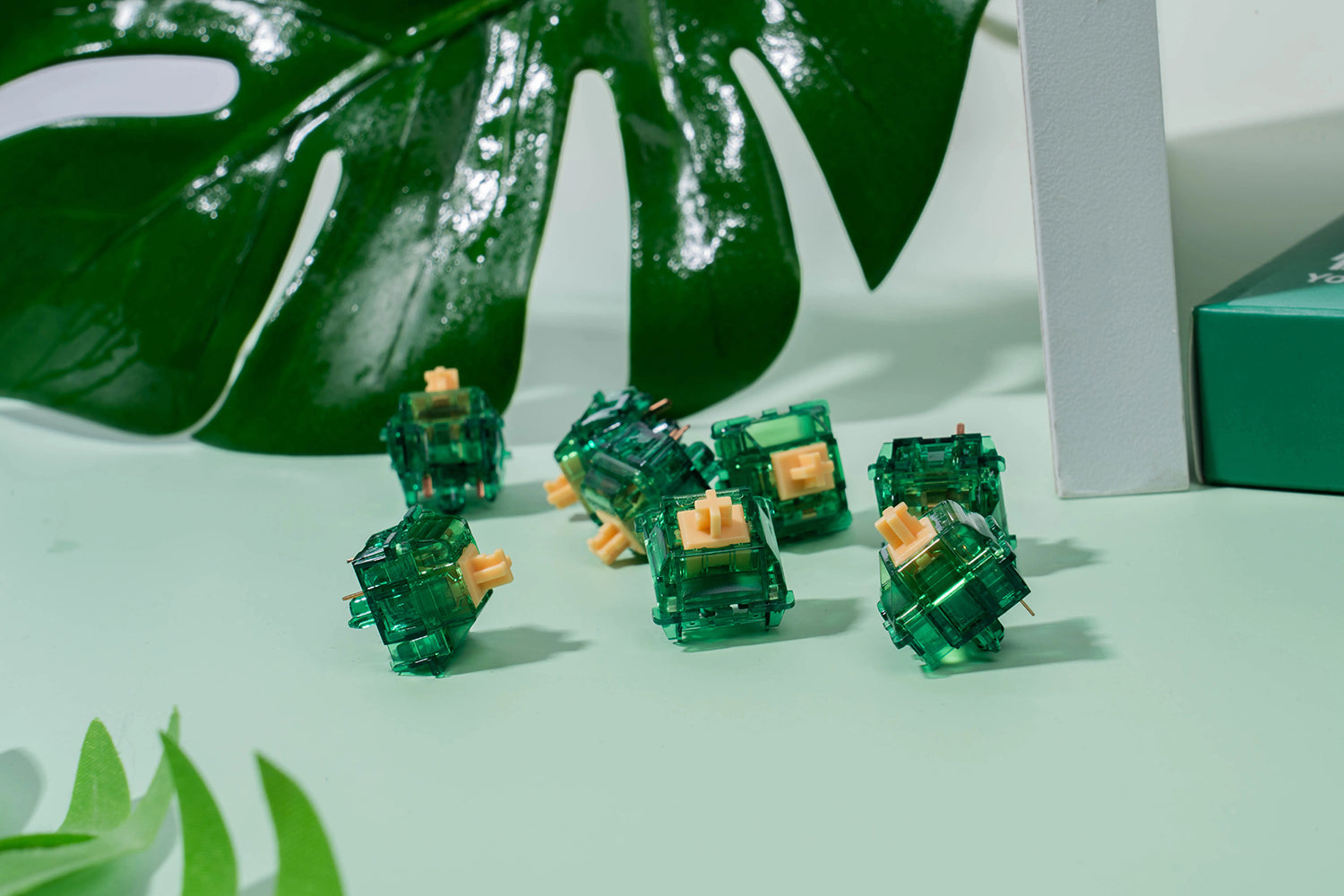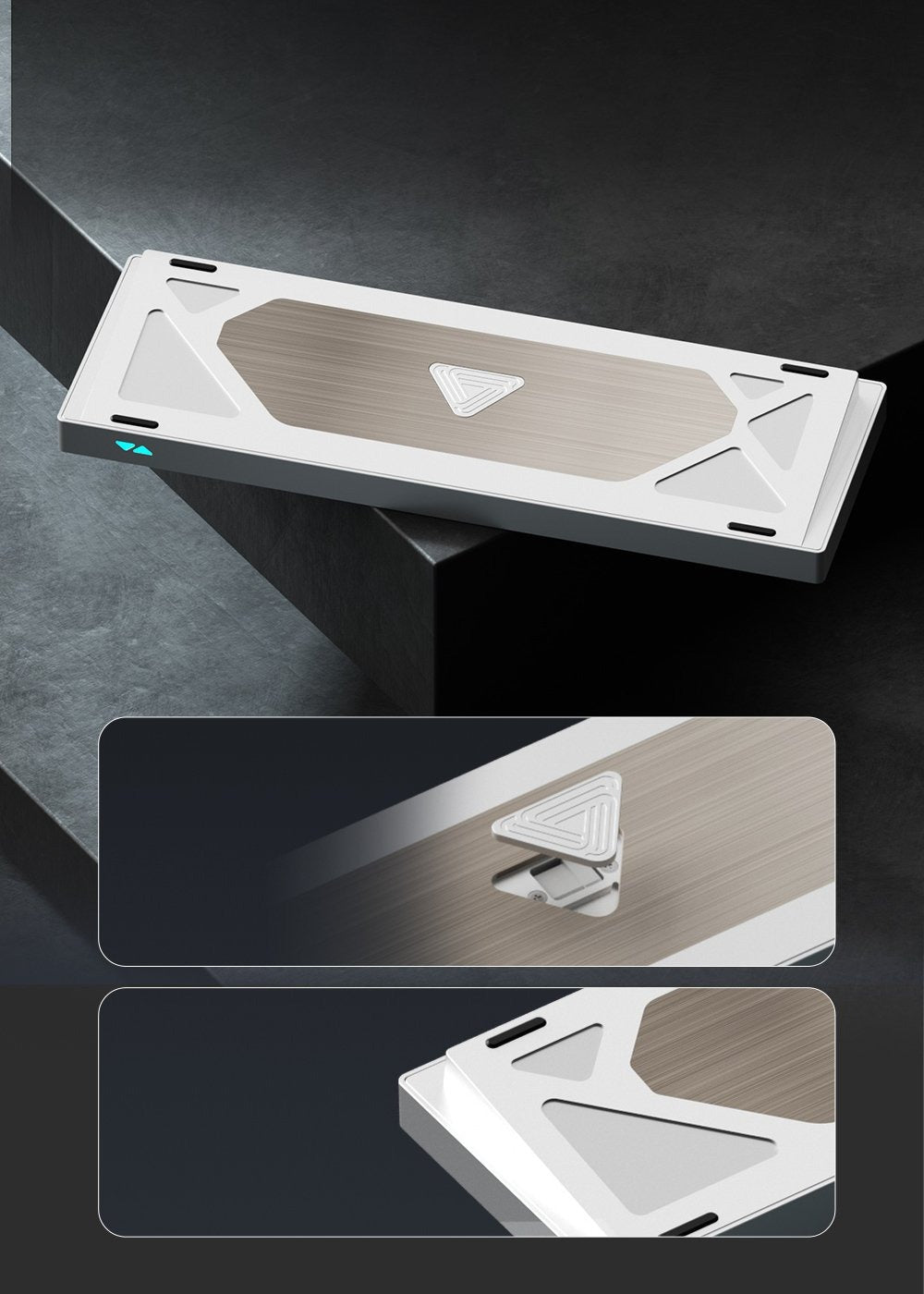When it comes to mechanical keyboards, one of the most important factors to consider is the sound of the key switches. Whether you’re typing away in a quiet office or gaming late at night, the sound profile of your keyboard can significantly affect your experience. For some, the tactile feedback and satisfying "click" of a keypress are essential, while for others, a quieter typing experience is a top priority. In this ultimate guide, we’ll explore the different key switch sound profiles—quiet, tactile, and clicky—and help you choose the best one for your environment.
Understanding Key Switch Sound Profiles
Mechanical key switches come in a variety of sound profiles, each with unique characteristics that suit different preferences. The main sound profiles of mechanical switches are clicky, tactile, and linear (quiet). Here’s an overview of each sound profile:
1. Clicky Switches
Clicky switches are characterized by a distinctive click sound when pressed. These switches provide an audible and tactile feedback with every key press, making them a favorite among typists and those who enjoy hearing each keystroke.
Pros of Clicky Switches:
- Satisfying Feedback: The loud "click" makes it easy to know exactly when a key has been pressed.
- Ideal for Typists: Many typists find the sound motivating and helpful for maintaining rhythm and accuracy.
Cons of Clicky Switches:
- Noisy: The loud sound may be distracting in shared or quiet environments, like offices or libraries.
- Can Be Annoying: In close spaces, the clicky sound might disturb coworkers or others in the same room.
Best For: People who enjoy auditory feedback while typing, typists, and gamers who want the satisfaction of every keystroke being heard.
2. Tactile Switches
Tactile switches are designed to provide a bump feeling when the key is activated. These switches are quieter than clicky switches but still provide feedback to let you know the key has been actuated.
Pros of Tactile Switches:
- Quiet with Feedback: Tactile switches offer a middle ground between the noisy click of a clicky switch and the smoothness of a linear switch.
- Great for Typing Accuracy: The bump allows you to feel when a key has been activated, making tactile switches ideal for typing-heavy tasks.
- Less Disruptive: Since they don’t produce a loud clicking sound, they are more suitable for office environments and shared spaces.
Cons of Tactile Switches:
- Moderate Noise: While quieter than clicky switches, they can still be audible to those around you.
Best For: Those who want tactile feedback without the noise, office workers, and individuals who type a lot but need a quieter environment.
3. Linear Switches (Quiet)
Linear switches are the quietest option. These switches provide a smooth, uninterrupted key press with no tactile bump or click. The primary characteristic of linear switches is their quiet actuation, making them a popular choice for people who prefer minimal noise when typing or gaming.
Pros of Linear Switches:
- Smooth and Quiet: The absence of a tactile bump or click makes these switches extremely quiet and smooth.
- Fast Actuation: Ideal for gamers who require rapid key presses, as the linear switch’s smoothness allows for faster, uninterrupted actuation.
Cons of Linear Switches:
- Lack of Feedback: Some users find the lack of tactile or audible feedback less satisfying, which may affect typing speed or accuracy for some.
Best For: People in quiet office spaces, gamers who need quick key presses, and those who value silence.
How Key Switch Sound Affects Typing Experience
The sound of your keyboard can influence your overall typing experience. Here’s how the different sound profiles can impact your workflow or gaming:
-
Clicky Switches: While the satisfying "click" may help some users maintain typing rhythm, it can be disruptive to others. If you work in an open office, you may find yourself feeling self-conscious about your typing sound. For gamers, the loud clicks might also be distracting in intense gaming moments.
-
Tactile Switches: The tactile bump gives users the necessary feedback without too much noise, making these a good compromise. You get the satisfaction of knowing when a key has been pressed, but without disturbing those around you.
-
Linear Switches: The smoothness and quiet nature of linear switches are perfect for shared spaces, and they’re especially ideal for gaming where speed and silent operation are critical. However, the absence of tactile feedback might make it harder for some to maintain typing accuracy without the feedback of a bump or click.
Tips for Quieting Noisy Switches
If you prefer a clicky or tactile switch but need to reduce the noise for a more discreet typing experience, there are several options to quiet your mechanical keyboard:
- Lubing Your Switches: Lubing the switches can reduce friction and dampen sound, especially in clicky or tactile switches.
- Adding Dampening O-rings: O-rings are small rubber rings that fit around the key stems to absorb the impact when keys are pressed or released, reducing both the noise and shock.
- Switch Dampeners: These can be placed on the key stems to absorb the sound and reduce the impact.
- Using a Sound Dampening Mat: Placing a mat beneath your keyboard can reduce the overall noise by absorbing vibrations from the keys.
Conclusion
Selecting the right key switch sound profile is a personal decision that depends on your typing preferences, working environment, and the noise tolerance of those around you. Clicky switches offer satisfying auditory feedback, tactile switches provide a quiet bump for precision, and linear switches are the best option for a completely silent and smooth experience. No matter your choice, there's a perfect switch out there to enhance your typing or gaming experience while keeping your environment in mind.
If you're unsure, consider testing out different switches before committing—many mechanical keyboard shops offer switch testers so you can get a feel for the sound and feedback before making a decision.






